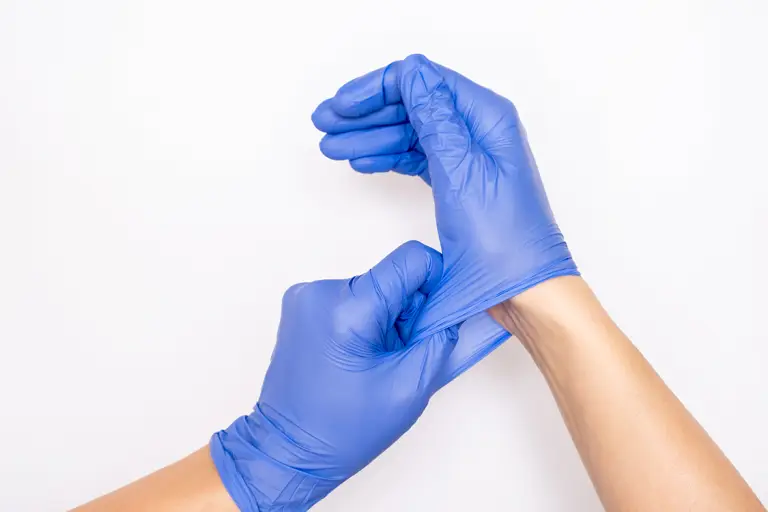We know that disasters and emergencies strike without warning, and at any time. Receive medical training that will enable you to save lives in these situations and feel confident in your training.
Beginning Care
Medical response, from a lay-person CPR class to advanced resuscitation courses for medical professionals, all follow the same basic algorithm before administering care to a person in need of medical attention. This is a checklist of to-do items that must be followed every time we move forward with patient care and interaction. These initial steps are sequential, and must be performed in order. Picture them as If-Then statements. We only move on to the next step if we answer negatively to previous steps. For our purposes, we will be discussing the most basic assessment you should perform for every emergency situation you find yourself in. This is called the Primary Survey:
- Scene Assessment – Is the area around the downed person (the scene) safe for me to enter into, or continue to be in? Look around you and ask “can I be here and not become a patient too?”. You will treat a situation where someone collapsed in a classroom with no immediate hazards different than a major vehicle collision on a busy highway. We avoid entering into or remaining in unsafe scenes, even to save a life, if we are at risk of becoming patients ourselves.
- Responsiveness – Check for responsiveness in a person in medical crisis. We do this by tapping on a persons shoulders firmly, and shouting “are you okay?” loudly. There are many reasons a person may collapse. We must eliminate the most life-threatening situations by learning if the person is responsive or unresponsive. Unresponsiveness means the person is not reactive to tapping and shouting.
- Activate the Emergency Reponses System – Immediately call 9-1-1 and call for an AED to activate the emergency response system. This is considered early recognition of a medical crisis, and will lead to better patient outcome.
- Check for Breathing and a Pulse – Check for a pulse at the carotid artery. These are the two large arteries that carry blood to the brain directly from the heart. Using any combination of fingers except for your thumb (your own pulse can be felt in your thumb) to check for a carotid pulse at either side of the neck in children and adults for at least 5 seconds, but no more than 10 seconds. We check the pulse of an infant at the brachial artery in the bicep of the arm. While we are checking for a pulse between 5-10 seconds, we look down the chest to look for chest rise and fall. If we don’t see breathing, and no pulse is present, we move to the next step.
- Proper Intervention – Its important to enact the proper intervention for the emergency at hand. Before we start any intervention need to have at a minimum, the information going through the above steps gives us. We recommend taking a CPR and First Aid classes to learn what interventions to perform for various emergencies.
Diagnostic Questions
If the patient has pain as a chief complaint, the pneumonic OPQRST is further information that will help you continue assessing the patient, while learning about their pain.
- Onset – Ask what the patient was doing when the pain began
- Provocation – Find out if anything make the pain better or worse, and if the pain changes with movement or rest
- Quality – Ask the patient to describe their pain to you
- Radiation – Find out if the patient can feel the pain anywhere else, and if it travels
- Severity – Determine the patients pain on a scale from 0-10
- Time – Determine when the patients pain started
In addition to the steps listed above, there are additional questions and information we want to obtain from a patient about their medical and personal history that will help us narrow potential treatment options and plans. The pneumonic that helps us learn more about the patients history is SAMPLE:
- Signs & Symptoms – Ask the patient what is bothering them and what signs of illness or injury they are experiencing
- Allergies – Determine if the patient has any medicinal or environmental allergies
- Medications – Ask the patient if they are taking any medications
- Pertinent Medical History – Determine if the patient has any current medical conditions
- Last Oral Intake – Ask the person when the last time they ate or drank anything. Determine what it was, if possible
- Events Leading To Present Illness – Determine what the patient was doing leading up to having their current symptoms
We should only take a SAMPLE history from a patient who has already had a Primary Assessment performed, and any life-threatening injuries or emergencies managed.
Conclusion
Use the information here to be a person that can act during an emergency, and not simply be acted upon. Being trained to any degree in medicine is a great asset to you personally, to those you love, and to your community. We encourage you to get basic first aid and CPR trained, so that you can act quickly and effectively in an emergency. Find a company that will train you in a standardized and nationally certified discipline, such as the AHA or ARC, in your area.
December 13, 2021
Jaret Kehl, NREMT
